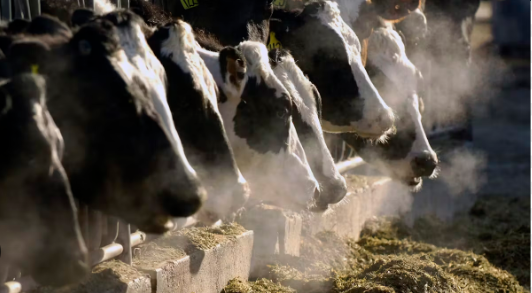Federal agencies continue to assert the safety of the pasteurized milk supply.
According to the Food and Drug Administration, samples of pasteurized milk tested positive for avian flu virus leftovers this past week.
According to the EPA, pasteurization will probably render the virus inactive, but it may also leave some viral particles behind. The results, according to the FDA, “do not necessarily represent actual virus that may be a risk to consumers.”
The FDA reports that preliminary findings indicate that 1 in 5 pasteurized milk samples contain traces of the avian flu virus. In locations where there were infected cattle, milk accounted for a larger percentage of the positive results.

Pasteurized Milk
“More testing is necessary to ascertain whether the infectious agent is still alive and undamaged, as this will help establish whether there is any risk of illness associated with consuming the product,” the FDA said in an update on Thursday.
The announcement coincides with the FDA’s continued surveillance of a bird flu outbreak among dairy cows in multiple states, including Texas, Idaho, Kansas, Michigan, New Mexico, North Carolina, and South Dakota. The United States has only ever documented two human cases of bird flu, both of which occurred to a worker on a commercial dairy farm in Texas.

Pasteurized Milk
Why Are Bird Flu Virus Remnants in Milk?
Although it can affect other animals, wild birds are usually the ones affected by bird flu. The Department of Agriculture states that although there is evidence that the virus can spread between herds, the original source of the infection in cattle is thought to have been wild migrating birds. Additionally, there is proof that the virus can return from dairy cows to neighboring flocks of chickens.
It has been established that both younger and older lactating cows can get sick. According to officials, injured cows recover with “little to no associated mortality” following supportive treatment.
Only milk from healthy animals is permitted for distribution into interstate commerce for human consumption, according to the FDA.

Pasteurized Milk
Is milk immune to bird flu?
This week, U.S. agencies declared that, according to available data, the commercial milk supply is safe. For its evaluation, the Agriculture Department and the FDA referenced the pasteurization procedure as well as the removal or diversion of milk from sick cows.
According to the FDA, “the pasteurization process has served public health well for more than 100 years.” “To make milk safer, pasteurization involves heating it to a certain temperature for a predetermined amount of time, which eliminates dangerous germs and viruses. Pasteurization is typically anticipated to eradicate microorganisms to a degree that does not endanger consumer health, even in the event that a virus is found in raw milk.
It’s unknown if consuming raw milk or raw cheese from an affected cow might spread the avian flu.
“It is advised by the FDA that the industry refrain from producing or marketing raw milk or raw milk cheese products derived from cows exhibiting symptoms of disease, such as those afflicted with avian influenza viruses or exposed to those infected with avian influenza viruses.”

Pasteurized Milk
What’s Being Done About It?
To gather data and stop the spread of avian flu among cattle, federal officials stated on Wednesday that lactating dairy calves being moved between states would need to test negative for the virus.
Furthermore, prior to interstate movement, owners of dairy cattle that test positive will have to furnish information such as animal movement tracing.
The Agriculture Department stated in a press release that “further testing and time to develop a critical understanding to support any future courses of action” are necessary in light of the novel H5N1 translocation between wild birds and dairy cows.
It’s crucial to keep in mind that, as of yet, the virus has not undergone any modifications that might increase its ability to spread amongst and to humans, the agency continued.

Also read:Research Indicates a Black-White Change in “Deaths of Despair”
images source: Google
Disclaimer: The opinions and suggestions expressed in this article are solely those of the individual analysts. These are not the opinions of HNN. For more, please consult with your doctor




































